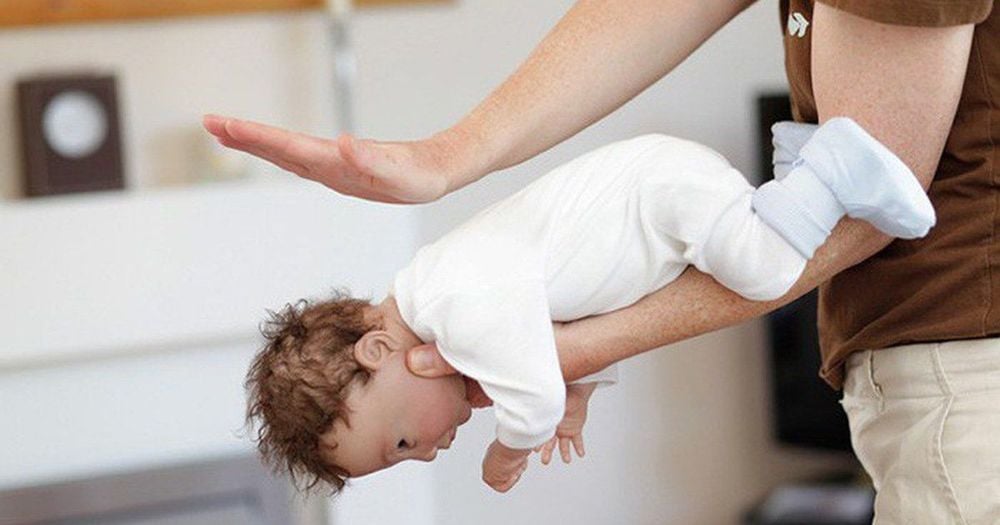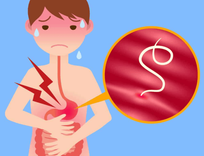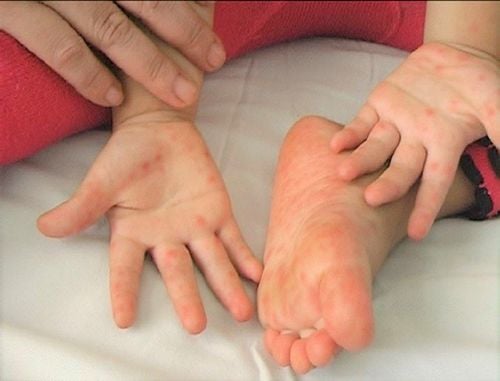The article was professionally consulted by Doctor II Le Thanh Cam - Department of Pediatrics - Neonatology - Vinmec Da Nang International General Hospital. He has 15 years of experience in diagnosing and treating pediatric diseases; he used to work at the Department of Pediatrics - Da Nang Hospital and the Da Nang Obstetrics and Pediatrics Center. His strengths are diagnosing and treating pediatric diseases, resuscitation, and pediatric emergency care.
Choking on milk is a common phenomenon in newborns. When a newborn chokes on milk, if the mother does not know how to handle it, the milk can enter the airway, causing the baby to stop breathing, have convulsions, turn purple, and if the baby does not receive timely first aid, it can be life-threatening. Therefore, parents need to know how to prevent choking on milk for their babies.
1. Why do infants often choke on milk?
Choking on milk is a very common accident in Pediatrics, even in developed countries. Documents from the UK, France, and the US have recorded many cases of children under 12 months old being found dead in a crib or on a bed after drinking milk or after a meal, concentrated on days that are too hot or too cold.
There are many causes of choking on milk in children as follows:
- Due to the mother not feeding the child in the right position, forcing the child to feed when the child is crying, coughing, or laughing. The correct position is to hold the child's head high, in a comfortable position. In the case that the mother lets the child lie down to feed in a state of bending or tilting the neck too far, the child will easily choke. Parents should also note that if the child is crying, do not be too impatient and quickly press the nipple into the child's mouth, this action will cause the child to choke on milk immediately.
- Because the rubber nipple has a hole that is too large, the milk flows quickly and the child cannot swallow it in time.
- Some mothers breastfeed their babies while they are drowsy, meaning they are breastfeeding but their bodies have begun to gradually transition to sleep. At this time, breast milk is still flowing but the baby does not swallow it but only holds it in his mouth. When breathing quickly, the baby can inhale milk into the nose, and into the trachea and bronchi, causing choking.
- Because there is too much breast milk, the milk flows out in a large stream, making it difficult for the baby to swallow.
- The baby is hungry so he drinks milk in a hurry, then he may cough or laugh suddenly, causing the baby to choke.
- At 3-4 months old, babies start to listen to stories and pay attention to people around them. If the mother talks and plays with the baby while breastfeeding, it can cause the baby to choke on milk.
In the case of bottle-feeding, the nipple is far away, the baby's mouth is not closed tightly, and the bottle is not tilted high enough. As a result, the baby swallows a lot of air while feeding, leading to bloating and vomiting after feeding. - Forcing the baby to drink too much can lead to spitting up milk. Sometimes parents pinch the baby's nose to open the baby's mouth to pour milk or powder in, causing the baby to choke

- Putting the baby to lie down immediately after feeding.
- Not monitoring the baby regularly after feeding (there are many cases of babies dying from choking on milk without the parents knowing).
Choking on milk is a common occurrence, especially in newborns. This is primarily due to the horizontal position of a baby's stomach. The angle between the stomach and esophagus is still obtuse, which has not yet formed a sharp angle to prevent reflux when the stomach is full. When a baby chokes, milk can flow back up, leading to irritation in the nose and discomfort, making the child fussy. If milk enters the respiratory tract during choking, it can cause suffocation, which may lead to serious consequences, including death or long-term complications such as brain damage (like hemorrhage, brain death, etc), cardiac arrest, and pneumonia (due to inhalation of food particles, which may carry intestinal parasites to the lungs).
Trắc nghiệm: Sự phát triển tinh thần, vận động của bé thế nào là đúng chuẩn?
Khi nào bé biết nói, biết hóng chuyện hay biết cầm cốc là "đúng chuẩn"? Điểm xem bạn biết được bao nhiêu mốc phát triển tinh thần, vận động "đúng chuẩn" của bé nhé!The following content is prepared under supervision of Thạc sĩ, Bác sĩ y khoa, Ma Văn Thấm , Nhi , Phòng khám Đa khoa Vinmec Dương Đông(Phú Quốc)
2. How to handle choking on milk in newborns
When infants choke on milk, as soon as they detect their condition, parents need to handle choking on milk for their children according to the instructions below:
Use your mouth to clear the airway:
- The mother quickly uses her mouth to suck hard to suck all the milk in the baby's nose and mouth out as quickly as possible. Suction the mouth first, then the nose.
- If delayed, the milk will enter the trachea, causing respiratory obstruction, and causing the baby to stop breathing.
Back pats, chest presses:
- One hand supports the child's chest, and the palm of the other hand pats the child's back 5 times, in the middle of the shoulder blades (pat with enough force, do not pat too hard on the child's body) to increase the pressure in the chest to help the milk flow out.
- If the child is still having difficulty breathing, or turning purple, parents should let the child lie on his back on the bed, table, floor, etc., and use the index finger and middle finger to suddenly press a moderate force on the lower half of the child's sternum, repeat 5-10 times until the child can breathe normally and stops choking on milk.
- For children showing signs of apnea, you can combine the above 2 measures and give mouth-to-mouth resuscitation to help the child breathe again.
After first aid, pat the baby's buttocks or thighs to wake him up, let him cry and breathe, then urgently take him to the nearest hospital or medical facility for treatment. Do not take him when he cannot breathe, because the brain will not be able to recover after a few minutes of lack of oxygen.

3. Prevent choking on milk for babies
- Feed in a high head position, or put the baby in a semi-reclining, semi-sitting chair. Avoid letting the baby lie flat.
- If the baby has a stuffy nose, remove the phlegm from the nose and mouth before feeding.
- Tilt the bottle to avoid air stagnation in the bottle.
- For babies with upper respiratory tract infections, feed slowly (do not punch too big a hole in the rubber nipple), if the baby cannot swallow the milk in time, stop immediately.
- After feeding, hold the baby upright for at least 15 minutes and pat the back gently to burp.
- Do not let the baby lie on his stomach or face the wall. Parents should regularly monitor their child's sleep.
- Do not let the child lie in an environment that is too hot or too cold to avoid breathing disorders.
- If the child has a heart condition or severe pneumonia, it is necessary to ask the doctor carefully about breastfeeding.
- Limit the baby from sleeping while breastfeeding. Let the baby sleep enough, and only breastfeed when the baby wakes up.
- When breastfeeding, mothers should not laugh and joke with the baby, this will make the baby laugh and choke on milk.
With this knowledge, parents should have a better understanding of the phenomenon of choking on milk in newborns, as well as strategies to prevent it. This will help mothers gain valuable experience in caring for their babies.
To reduce the risk of choking or vomiting in young children, parents should consider supplementing zinc properly for their children., alongside other essential vitamins and minerals such as lysine, chromium, and B vitamins. These nutrients can help children eat better, strengthen their immune systems, increase their resistance to illness, and minimize digestive issues.
To arrange an appointment, please call HOTLINE or make your reservation directly HERE. You may also download the MyVinmec app to schedule appointments faster and manage your reservations more conveniently.
LAMINKID I Health Protection Food:
The product has the effect of supplementing minerals and vitamins for the body. Supports digestion, increases food absorption, helps children eat well. Supports improving resistance for children, and helps reduce the risk of diseases due to poor resistance such as upper respiratory tract infections, and flu.

















